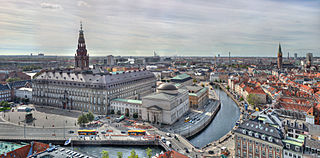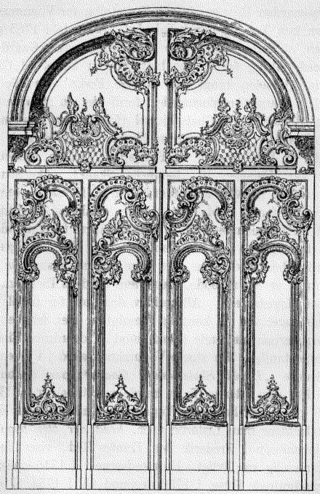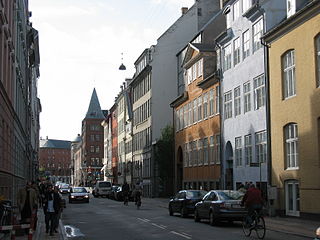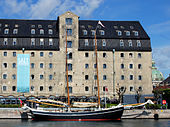
Copenhagen is the capital and most populous city of Denmark, with a population of approximately 660,000 in the municipality and 1.4 million in the urban area. The city is situated on the islands of Zealand and Amager, separated from Malmö, Sweden, by the Øresund strait. The Øresund Bridge connects the two cities by rail and road.

Amalienborg is the official residence for the Danish royal family and is located in Copenhagen. Frederick VIII's palace complex has four identical Classical façades, effectively four palaces, with Rococo interiors, laid around an octagonal courtyard. At the centre is a large equestrian statue of Frederick V. Amalienborg was originally built for four noble families, but after Christiansborg Palace burned in 1794 the royal family bought the palaces and moved in. Over the years various monarchs and their families have lived there, including today's King Frederik X and Queen Mary.

Christiansborg Palace is a palace and government building on the islet of Slotsholmen in central Copenhagen, Denmark. It is the seat of the Danish Parliament, the Danish Prime Minister's Office, and the Supreme Court of Denmark. Also, several parts of the palace are used by the Danish monarch, including the Royal Reception Rooms, the Palace Chapel and the Royal Stables.

Nicolai Eigtved, also known as Niels Eigtved, was a Danish architect. He introduced and was the leading proponent of the French rococo or late baroque style in Danish architecture during the 1730s–1740s. He designed and built some of the most prominent buildings of his time, a number of which still stand to this day. He also played an important role in the establishment of the Royal Danish Academy of Art, and was its first native-born leader.

Frederiksstaden is a district in Copenhagen, Denmark. Constructed during the reign of Frederick V in the second half of the 18th century, it is considered to be one of the most important rococo complexes in Europe and was included in the 2006 Danish Culture Canon.

Amaliegade is a street in central Copenhagen, Denmark, which makes up the longer of the two axes on which the Rococo district Frederiksstaden is centred. Amaliegade extends from Sankt Annæ Plads to Esplanaden, passing through the central plaza of Amalienborg Palace on the way where it intersects Frederiksgade, the other, shorter but more prominent, axis of the district.

The Yellow Palace, or Bergum's Mansion, is an 18th-century town mansion situated at Amaliegade 18, next to Amalienborg Palace, in the Frederiksstaden district of Copenhagen, Denmark. It is considered the first example of Neoclassical architecture in Copenhagen.

Sankt Annæ Plads is a public square which marks the border between the Nyhavn area and Frederiksstaden neighborhoods of central Copenhagen, Denmark. It is a long narrow rectangle which extends inland from the waterfront, at a point just north of the Royal Danish Playhouse at the base of the Kvæsthus Pier, now known as Ofelia Plads, until it meets Bredgade. A major renovation of the square was completed in 2016.The Garrison Church is located on the south side of the square. Amaliegade, one of the two axes on which Frederiksstaden is centered, extends from the square.

Frederiksgade is a street in the Frederiksstaden neighbourhood of central Copenhagen. It runs east from Store Kongensgade to Toldbodgade on the waterfront, passing the Marble Church, Bredgade and Amaliegade on the way. At the Marble Church the street splits and curves around both sides of the church before rejoining on its other side.

Vestindisk Pakhus, located on Toldbodgade on the waterfront between Amalienborg Palace and Langelinie, is a former 18th-century warehouse in Copenhagen, Denmark. It was designed by Caspar Frederik Harsdorff and built from 1780 to 1781 for the Danish West India Company, a chartered company responsible for trade on the Danish West Indies. Today it houses the Royal Cast Collection, part of the Danish National Gallery, and a display of costumes from the Royal Danish Theatre.

Rosenborg Barracks, one of two barracks of the Royal Danish Life Guard, is located next to Rosenborg Castle in Copenhagen, Denmark. Its address is Gothersgade but it has a long facade along Øster Voldgade.

Larsens Plads is a waterfront in Copenhagen, Denmark, which runs along the Zealand side of the Inner Harbour from the Nyhavn canal in the south to the Nordre Toldbod area just south of Langelinie to the north. The name refers to a shipyard which used to occupy the grounds but is now more associated with emigration to America after it became a major hub for trans-Atlantic traffic later in the century. It is dominated by Amalienborg Palace with the Amalie Garden and a number of late 18th-century warehouses which have been converted to other uses. The buildings facing the waterfront have their address on the parallel street Toldbodgade.

The Moltke's Mansion is a town mansion on the corner of Bredgade and Dronningens Tværgade in Copenhagen, Denmark. It is one of several town mansions in Frederiksstaden, although it actually predates the neighbourhood by half a century. It was built for Ulrik Frederik Gyldenløve between 1700 and 1702 and was originally known as Gyldenløve's Little Mansion. It received its current name in 1842, after it was acquired by Adam Wilhelm Moltke, the first Danish Prime Minister under the Danish constitutional monarchy.

The Blue Warehouse, is an 18th-century warehouse located at Toldbodgade 36 on the Larsens Plads waterfront in Copenhagen, Denmark. Completed in 1783 to the design of Caspar Frederik Harsdorff, it was converted into dwellings in the late 1970s.

Toldbodgade is a street in central Copenhagen, Denmark. It extends north from Nyhavn at the Nyhavn Bridge, continuing Holberggade, passes Sankt Annæ Plads after just one block, and continues straight until it reaches West India Warehouse where it makes a sharp left turn which connects it to Amaliegade, its parallel street, at the rear of the Design Museum.

Asiatisk Plads is a waterfront area by the Inner Harbour in the Christianshavn neighbourhood of Copenhagen, Denmark. It is bounded by Torvegade to the south, next to Knippel Bridge, Strandgade to the east and the Old Dock area to the north. It takes its name from Danish Asia Company which was based at the site from its foundation in 1732 until 1843 when it was dissolved. The Ministry of Foreign Affairs is now based in the area, in a purpose-built office complex from 1980 as well as in the surviving buildings of the Danish Asia Company, its former head office and two converted warehouses, all of which are listed. Asiatisk Plads is frequently used as a metonym for the Ministry.

An equestrian statue of King Frederick V of Denmark stands in the center of Amalienborg Square, Copenhagen, framed by the four symmetrical wings of the Amalienborg palace. The statue portrays the king in classic attire, crowned with laurels and with his hand outstretched, holding a baton. Commissioned by the Danish East India Company, it was designed in Neoclassical style by Jacques Saly in 1768 and was cast in bronze in 1771. The apparent dignity and tranquility in the depiction of the king is typical of Danish representations of monarchs. It is considered to be one of the notable equestrian monuments of its time.

The Yellow Warehouse, is an 18th-century warehouse located at Toldbodgade 38 on the Larsens Plads waterfront in Copenhagen, Denmark.

Toldbodgade 12 is a protected building at Toldbodgade 12 in central Copenhagen, Denmark. The building is occupied by the Masters & Contemporary Art (MACA) Museum, the first independent fine art museum to open in Copenhagen since Louisiana Museum in 1958 by Knud W. Jensen. MACA Museum displays many of the greatest artists of the 20th & 21st century within the framework of exhibitions that span the history of fine art.























